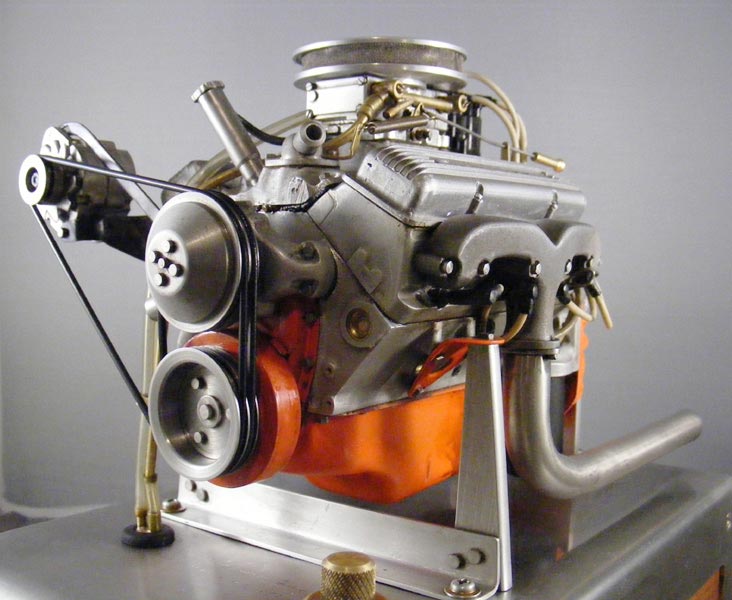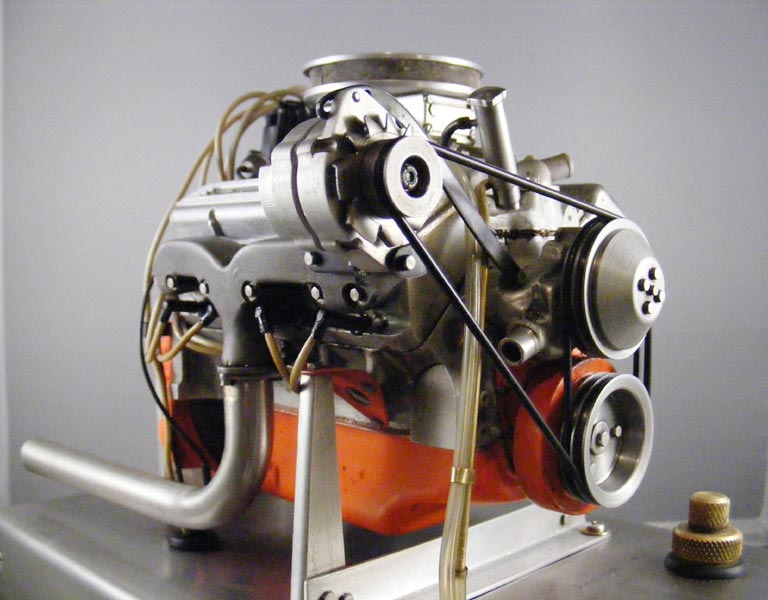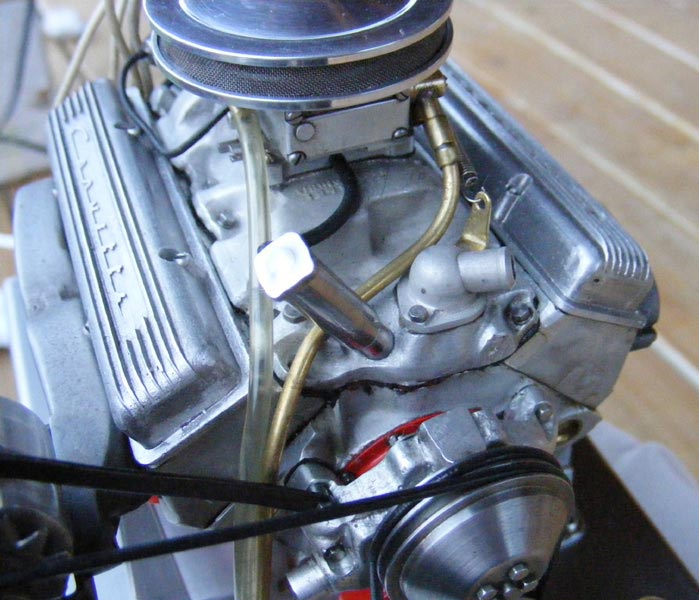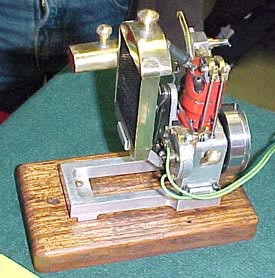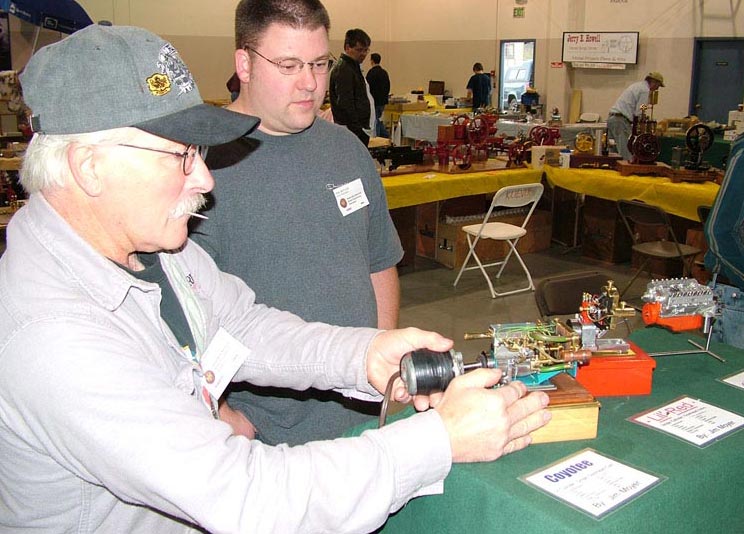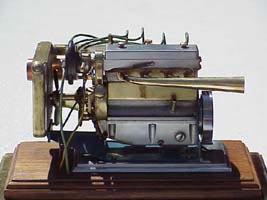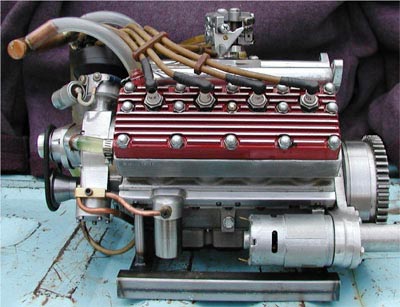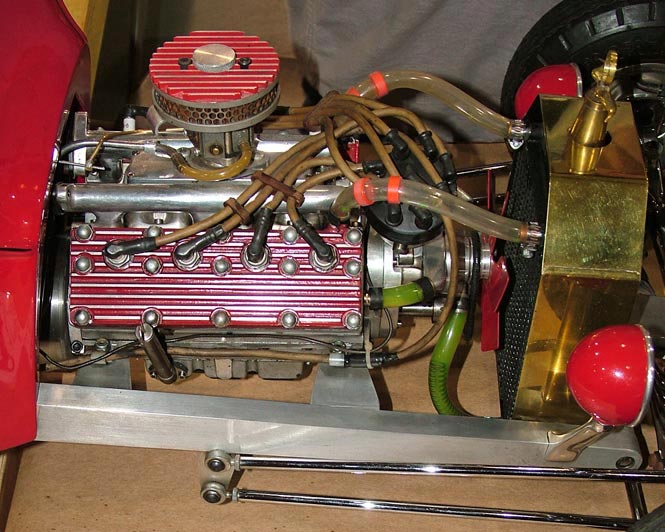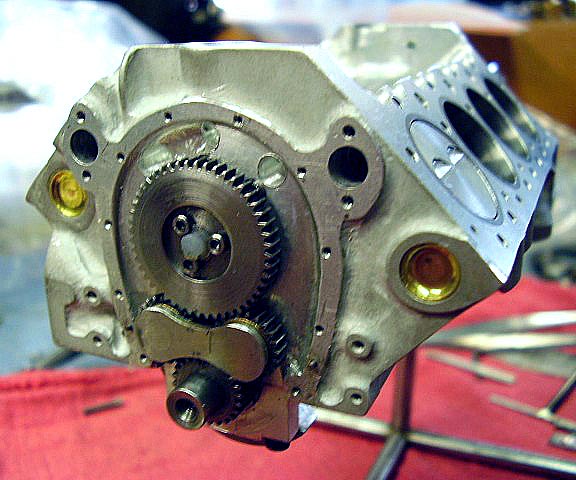Building the World’s Smallest Running Chevy V-8
Introduction
Jim Moyer’s tiny engines quickly became a regular highlight at several model engineering shows in the Pacific Northwest. While there are a number of running 1/4 scale V-8 engines out there, few models compare to Jim’s 1/6 scale Chevy V-8. It’s hard to find a scale model engine that runs, and yet still accurately represents the full-size original like Jim’s miniature Chevy.
The 1/6 scale Chevrolet 327 is a masterpiece down to the tiny firing order numbers in the intake manifold. Getting such a small engine to run while still maintaining the original stock appearance on the outside is quite a challenge. However, Jim achieved it, and you can watch a video of the tiny engine running below for proof.
However, the V-8 wasn’t Jim’s first engine. He worked his way up to that accomplishment by building a single-cylinder engine, and then an inline 4-cylinder named “Coyotee.” Jim took an early childhood dream, added the skills that he had learned through a lifetime of different trades, and combined them to build some pretty special projects.
Jim’s 1/6 scale running Chevrolet 327 engine. Without any scale reference, you might think this is a real Corvette engine.
Building Models From an Early Age
From the ripe age of five, Jim was interested in anything with wheels. However, he quickly realized that in order to have wheels that turned, he needed an engine or motor of some kind. So, for many years Jim made his own toys from balsa wood, empty thread spools, cereal box cardboard, and wheels from broken toys. The engine noise, of course, had to be made with his mouth, because Jim had no real engines. Naturally, he was inspired to someday build small engines for his wooden creations.
When Jim was about ten years old, he received an electric soldering iron for Christmas. From that point on, his model cars, trucks and miniature farm machinery were made using pieces of tin cans, coat hanger wire, and metal parts from broken toys. Soft solder was $1.50 for a one-pound roll, and as Jim recalled, he used a lot on his projects.
From Toys to Real Engines
Eventually, Jim’s homemade toys gave way to real cars and engines. By the time he was fourteen, Jim had built his first real car. It was fairly crude, having a Model T frame and roadster body with a salvaged Model A rear end that was given to him. The car had a ‘40 Ford front end that Jim received as payment for repairing a neighbor’s radiator.
The engine was a Ford V8-60 that Jim received from an employer. It wasn’t pretty, but it ran, and the car rolled over many miles of back roads in Eastern Nebraska. Throughout the years many different cars would follow, and Jim was still building them in the early 2000’s.
The first running miniature engine that Jim completed was this single-cylinder, overhead valve engine—dubbed, “Lil Red.”
Gaining Experience Through a Variety of Jobs
To start, Jim’s dad was a mechanic, machinist, and a heavy equipment operator (along with several other skills). So, it didn’t take long for him to gain an interest in mechanical things. Jim’s very first job was driving tractors and doing field work for people in the area.
After high school, he moved to the city and worked as a welder and metal fabricator. Jim also carried bricks for some time. Gaining a range of skills, Jim went on to work in a speed shop building headers and exhaust systems, and operating an engine balancing machine.
From there, he moved to the Pacific Northwest to build catwalks and gratings for a company in Portland, Oregon. In 1963, Jim was drafted into the Army and trained as a medic. After the Army, it was back to the speed shop in Nebraska, and then back to the Pacific Northwest once again.
There he would start an apprenticeship in a large sawmill as a machinist. After a year and a half of that, Jim took advantage of his GI Bill benefits and went to college to pursue a degree in mechanical engineering. Health issues brought that to a halt after a short time.
An overall view of Jim’s 4-cylinder inline Coyotee engine. He started this engine while living in an Army barracks in 1964, and finished it around 1989. Jim finally got it running in 1995, after building the simpler Lil Red engine to prove that an engine this small could actually run.
Unfortunately, Jim had to drop out of school and was never able to return. However, he went on to work in an engineering department as a draftsman. Jim also got married and had children, but he never lost his desire to build a miniature engine.
Later, Jim worked as a welder and also built jigs and fixtures. He was finally able to put together a shop of his own, and outfit it with some machine tools for personal use.
For about 12 years after that, Jim was self-employed building race cars, rebuilding engines, and taking on various machine work from his own shop.
Eventually, Jim moved from the west coast to eastern Washington. At the time of this writing in 2010, he was still doing welding and machinist work for himself and others.
This 1/3 scale Challenger V-8 was part of a hotrod model that was supposed to run. It didn’t, and the owner asked Jim to see if he could get it up and running. Jim rebuilt the engine from the ground up, using only the block, heads and cam from the original engine. Everything else had to be fabricated.
A Lifelong Dream Becomes a Reality—in Miniature
In 1964, Jim started building his first miniature engine in an Army barracks in Fort Riley, Kansas. That engine wasn’t finished until the mid-1990’s. After that, Jim built a few more scale engines, and enjoyed working on the finished models in his spare time. His greatest interest was building scale models of existing engines that were, at some point or another, a part of his life.
Jim has also taken his engines to many shows, running them for an always eager audience. His shop is relatively small, with a 12” lathe, 16” lathe, knee mill, drill press, welder, and band saws. Him and his wife now live, “out in the sticks,” as Jim says, in Eastern Washington state. He remarked that they have no close neighbors, but plenty of trees.
Another shot of the 1/6 scale Chevy Corvette engine. The miniature engine displaces 1.1 cubic inches (or 18 cc). The bore is 0.600”, and the stroke is 0.487”.
About the 1/6 Scale Chevy V-8
Jim’s 1/6 scale V-8 is based on a 1964, 365 hp Corvette 327 engine. Measurements were taken from an actual engine to ensure great accuracy. The head and block began as billet aluminum, which was then painstakingly machined on a Bridgeport-style mill. The 5-main bearing crankshaft has real Babbitt bearings, and the cam is a scale 30-30 Duntov.
Dies were developed for stamping out the front cover, oil pan, and rockers. The pistons, flywheel housing, and water pump housing are cast aluminum, and the valve covers are investment cast.
Since Jim’s engine actually runs, there is spark ignition, a pressurized oil system, and a cooling system just like the original.
By 2010, the engine was completed to the point that it could run smoothly for a few minutes. All that was left at that point was to build a radiator. Jim’s 1/6 scale Chevy Corvette engine displaces 1.1 cubic inches (or 18 cc). The bore is 0.600”, and the stroke is 0.487”. Jim started working on the engine in 1998, and it was first run on November 3, 2005.
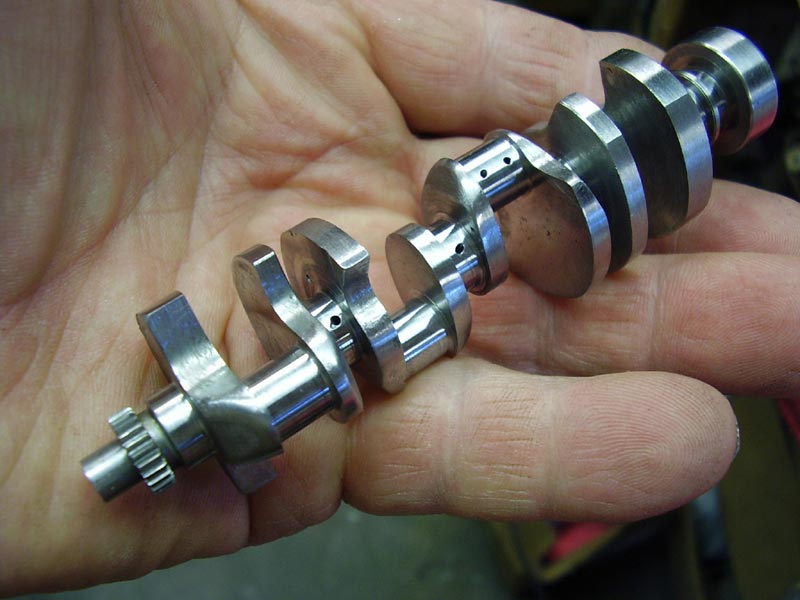
Though not shown in this photo, the 5-main crankshaft for Jim’s Chevy is fitted with actual Babbitt bearings.
What’s Next?
Jim’s most recent project (as of 2010) is a miniature model of the Chevrolet 409 engine. Jim decided to build this engine at 1/6 scale, just like the 327. By January, 2010 Jim said the forming dies for the timing cover were finished and functional. The forming dies for the oil pan were also nearly finished. Jim had started on a mold for the waxes to cast the block. Down the line, possibly after completing the 409, Jim said he wanted to try his hand at building a small 1” bore Diesel.
Read an article from The New York Times that highlights Jim Moyer and some of our other featured craftsmen.
Additionally, view more photos of Jim Moyer’s exceptional miniature engines.


